Jinglu Wang
GS-Marker: Generalizable and Robust Watermarking for 3D Gaussian Splatting
Mar 24, 2025



Abstract:In the Generative AI era, safeguarding 3D models has become increasingly urgent. While invisible watermarking is well-established for 2D images with encoder-decoder frameworks, generalizable and robust solutions for 3D remain elusive. The main difficulty arises from the renderer between the 3D encoder and 2D decoder, which disrupts direct gradient flow and complicates training. Existing 3D methods typically rely on per-scene iterative optimization, resulting in time inefficiency and limited generalization. In this work, we propose a single-pass watermarking approach for 3D Gaussian Splatting (3DGS), a well-known yet underexplored representation for watermarking. We identify two major challenges: (1) ensuring effective training generalized across diverse 3D models, and (2) reliably extracting watermarks from free-view renderings, even under distortions. Our framework, named GS-Marker, incorporates a 3D encoder to embed messages, distortion layers to enhance resilience against various distortions, and a 2D decoder to extract watermarks from renderings. A key innovation is the Adaptive Marker Control mechanism that adaptively perturbs the initially optimized 3DGS, escaping local minima and improving both training stability and convergence. Extensive experiments show that GS-Marker outperforms per-scene training approaches in terms of decoding accuracy and model fidelity, while also significantly reducing computation time.
StreamGS: Online Generalizable Gaussian Splatting Reconstruction for Unposed Image Streams
Mar 08, 2025



Abstract:The advent of 3D Gaussian Splatting (3DGS) has advanced 3D scene reconstruction and novel view synthesis. With the growing interest of interactive applications that need immediate feedback, online 3DGS reconstruction in real-time is in high demand. However, none of existing methods yet meet the demand due to three main challenges: the absence of predetermined camera parameters, the need for generalizable 3DGS optimization, and the necessity of reducing redundancy. We propose StreamGS, an online generalizable 3DGS reconstruction method for unposed image streams, which progressively transform image streams to 3D Gaussian streams by predicting and aggregating per-frame Gaussians. Our method overcomes the limitation of the initial point reconstruction \cite{dust3r} in tackling out-of-domain (OOD) issues by introducing a content adaptive refinement. The refinement enhances cross-frame consistency by establishing reliable pixel correspondences between adjacent frames. Such correspondences further aid in merging redundant Gaussians through cross-frame feature aggregation. The density of Gaussians is thereby reduced, empowering online reconstruction by significantly lowering computational and memory costs. Extensive experiments on diverse datasets have demonstrated that StreamGS achieves quality on par with optimization-based approaches but does so 150 times faster, and exhibits superior generalizability in handling OOD scenes.
UVRM: A Scalable 3D Reconstruction Model from Unposed Videos
Jan 16, 2025



Abstract:Large Reconstruction Models (LRMs) have recently become a popular method for creating 3D foundational models. Training 3D reconstruction models with 2D visual data traditionally requires prior knowledge of camera poses for the training samples, a process that is both time-consuming and prone to errors. Consequently, 3D reconstruction training has been confined to either synthetic 3D datasets or small-scale datasets with annotated poses. In this study, we investigate the feasibility of 3D reconstruction using unposed video data of various objects. We introduce UVRM, a novel 3D reconstruction model capable of being trained and evaluated on monocular videos without requiring any information about the pose. UVRM uses a transformer network to implicitly aggregate video frames into a pose-invariant latent feature space, which is then decoded into a tri-plane 3D representation. To obviate the need for ground-truth pose annotations during training, UVRM employs a combination of the score distillation sampling (SDS) method and an analysis-by-synthesis approach, progressively synthesizing pseudo novel-views using a pre-trained diffusion model. We qualitatively and quantitatively evaluate UVRM's performance on the G-Objaverse and CO3D datasets without relying on pose information. Extensive experiments show that UVRM is capable of effectively and efficiently reconstructing a wide range of 3D objects from unposed videos.
Efficient Autoregressive Audio Modeling via Next-Scale Prediction
Aug 16, 2024



Abstract:Audio generation has achieved remarkable progress with the advance of sophisticated generative models, such as diffusion models (DMs) and autoregressive (AR) models. However, due to the naturally significant sequence length of audio, the efficiency of audio generation remains an essential issue to be addressed, especially for AR models that are incorporated in large language models (LLMs). In this paper, we analyze the token length of audio tokenization and propose a novel \textbf{S}cale-level \textbf{A}udio \textbf{T}okenizer (SAT), with improved residual quantization. Based on SAT, a scale-level \textbf{A}coustic \textbf{A}uto\textbf{R}egressive (AAR) modeling framework is further proposed, which shifts the next-token AR prediction to next-scale AR prediction, significantly reducing the training cost and inference time. To validate the effectiveness of the proposed approach, we comprehensively analyze design choices and demonstrate the proposed AAR framework achieves a remarkable \textbf{35}$\times$ faster inference speed and +\textbf{1.33} Fr\'echet Audio Distance (FAD) against baselines on the AudioSet benchmark. Code: \url{https://github.com/qiuk2/AAR}.
$\text{R}^2$-Bench: Benchmarking the Robustness of Referring Perception Models under Perturbations
Mar 07, 2024


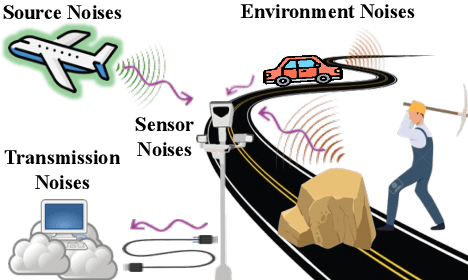
Abstract:Referring perception, which aims at grounding visual objects with multimodal referring guidance, is essential for bridging the gap between humans, who provide instructions, and the environment where intelligent systems perceive. Despite progress in this field, the robustness of referring perception models (RPMs) against disruptive perturbations is not well explored. This work thoroughly assesses the resilience of RPMs against various perturbations in both general and specific contexts. Recognizing the complex nature of referring perception tasks, we present a comprehensive taxonomy of perturbations, and then develop a versatile toolbox for synthesizing and evaluating the effects of composite disturbances. Employing this toolbox, we construct $\text{R}^2$-Bench, a benchmark for assessing the Robustness of Referring perception models under noisy conditions across five key tasks. Moreover, we propose the $\text{R}^2$-Agent, an LLM-based agent that simplifies and automates model evaluation via natural language instructions. Our investigation uncovers the vulnerabilities of current RPMs to various perturbations and provides tools for assessing model robustness, potentially promoting the safe and resilient integration of intelligent systems into complex real-world scenarios.
Rethinking Audiovisual Segmentation with Semantic Quantization and Decomposition
Sep 29, 2023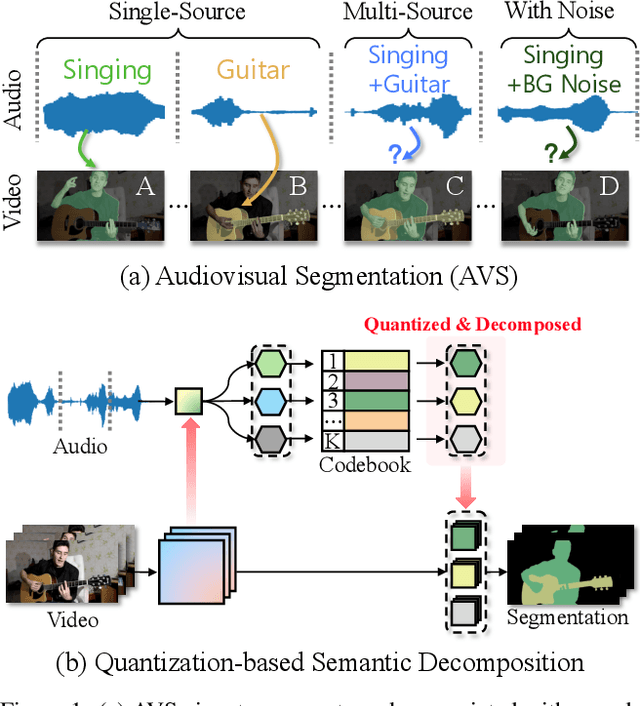
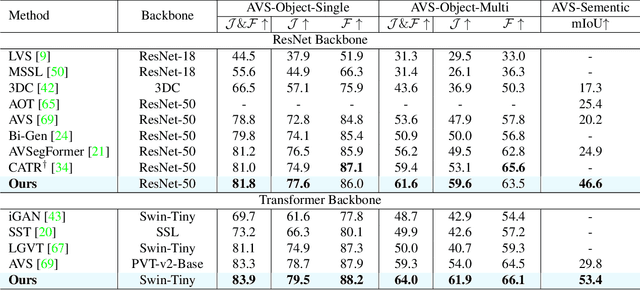
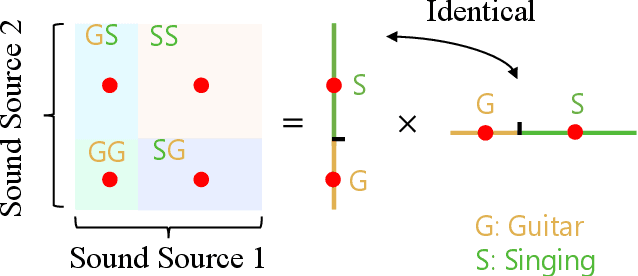

Abstract:Audiovisual segmentation (AVS) is a challenging task that aims to segment visual objects in videos based on their associated acoustic cues. With multiple sound sources involved, establishing robust correspondences between audio and visual contents poses unique challenges due to its (1) intricate entanglement across sound sources and (2) frequent shift among sound events. Assuming sound events occur independently, the multi-source semantic space (which encompasses all possible semantic categories) can be viewed as the Cartesian product of single-source sub-spaces. This motivates us to decompose the multi-source audio semantics into single-source semantics, allowing for more effective interaction with visual content. Specifically, we propose a semantic decomposition method based on product quantization, where the multi-source semantics can be decomposed and represented by several quantized single-source semantics. Furthermore, we introduce a global-to-local quantization mechanism that distills knowledge from stable global (clip-level) features into local (frame-level) ones to handle the constant shift of audio semantics. Extensive experiments demonstrate that semantically quantized and decomposed audio representation significantly improves AVS performance, e.g., +21.2% mIoU on the most challenging AVS-Semantic benchmark.
Efficient View Synthesis with Neural Radiance Distribution Field
Aug 22, 2023

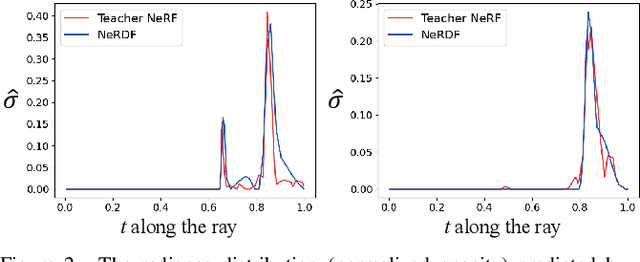
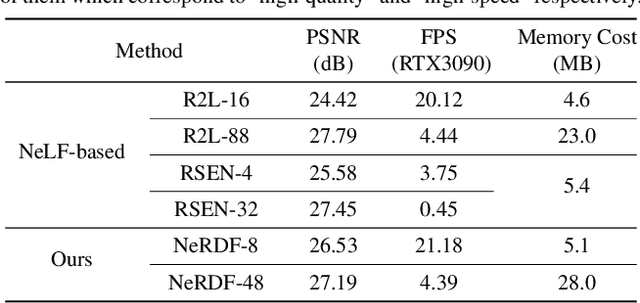
Abstract:Recent work on Neural Radiance Fields (NeRF) has demonstrated significant advances in high-quality view synthesis. A major limitation of NeRF is its low rendering efficiency due to the need for multiple network forwardings to render a single pixel. Existing methods to improve NeRF either reduce the number of required samples or optimize the implementation to accelerate the network forwarding. Despite these efforts, the problem of multiple sampling persists due to the intrinsic representation of radiance fields. In contrast, Neural Light Fields (NeLF) reduce the computation cost of NeRF by querying only one single network forwarding per pixel. To achieve a close visual quality to NeRF, existing NeLF methods require significantly larger network capacities which limits their rendering efficiency in practice. In this work, we propose a new representation called Neural Radiance Distribution Field (NeRDF) that targets efficient view synthesis in real-time. Specifically, we use a small network similar to NeRF while preserving the rendering speed with a single network forwarding per pixel as in NeLF. The key is to model the radiance distribution along each ray with frequency basis and predict frequency weights using the network. Pixel values are then computed via volume rendering on radiance distributions. Experiments show that our proposed method offers a better trade-off among speed, quality, and network size than existing methods: we achieve a ~254x speed-up over NeRF with similar network size, with only a marginal performance decline. Our project page is at yushuang-wu.github.io/NeRDF.
Rethinking Voice-Face Correlation: A Geometry View
Jul 26, 2023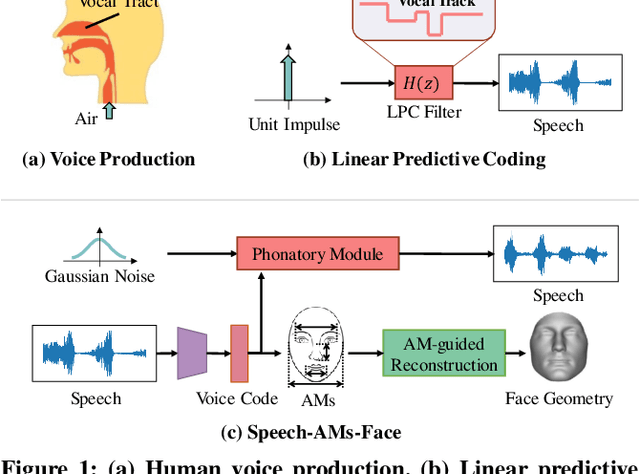



Abstract:Previous works on voice-face matching and voice-guided face synthesis demonstrate strong correlations between voice and face, but mainly rely on coarse semantic cues such as gender, age, and emotion. In this paper, we aim to investigate the capability of reconstructing the 3D facial shape from voice from a geometry perspective without any semantic information. We propose a voice-anthropometric measurement (AM)-face paradigm, which identifies predictable facial AMs from the voice and uses them to guide 3D face reconstruction. By leveraging AMs as a proxy to link the voice and face geometry, we can eliminate the influence of unpredictable AMs and make the face geometry tractable. Our approach is evaluated on our proposed dataset with ground-truth 3D face scans and corresponding voice recordings, and we find significant correlations between voice and specific parts of the face geometry, such as the nasal cavity and cranium. Our work offers a new perspective on voice-face correlation and can serve as a good empirical study for anthropometry science.
PaintSeg: Training-free Segmentation via Painting
Jun 04, 2023



Abstract:The paper introduces PaintSeg, a new unsupervised method for segmenting objects without any training. We propose an adversarial masked contrastive painting (AMCP) process, which creates a contrast between the original image and a painted image in which a masked area is painted using off-the-shelf generative models. During the painting process, inpainting and outpainting are alternated, with the former masking the foreground and filling in the background, and the latter masking the background while recovering the missing part of the foreground object. Inpainting and outpainting, also referred to as I-step and O-step, allow our method to gradually advance the target segmentation mask toward the ground truth without supervision or training. PaintSeg can be configured to work with a variety of prompts, e.g. coarse masks, boxes, scribbles, and points. Our experimental results demonstrate that PaintSeg outperforms existing approaches in coarse mask-prompt, box-prompt, and point-prompt segmentation tasks, providing a training-free solution suitable for unsupervised segmentation.
High-Fidelity and Freely Controllable Talking Head Video Generation
Apr 20, 2023Abstract:Talking head generation is to generate video based on a given source identity and target motion. However, current methods face several challenges that limit the quality and controllability of the generated videos. First, the generated face often has unexpected deformation and severe distortions. Second, the driving image does not explicitly disentangle movement-relevant information, such as poses and expressions, which restricts the manipulation of different attributes during generation. Third, the generated videos tend to have flickering artifacts due to the inconsistency of the extracted landmarks between adjacent frames. In this paper, we propose a novel model that produces high-fidelity talking head videos with free control over head pose and expression. Our method leverages both self-supervised learned landmarks and 3D face model-based landmarks to model the motion. We also introduce a novel motion-aware multi-scale feature alignment module to effectively transfer the motion without face distortion. Furthermore, we enhance the smoothness of the synthesized talking head videos with a feature context adaptation and propagation module. We evaluate our model on challenging datasets and demonstrate its state-of-the-art performance. More information is available at https://yuegao.me/PECHead.
 Add to Chrome
Add to Chrome Add to Firefox
Add to Firefox Add to Edge
Add to Edge